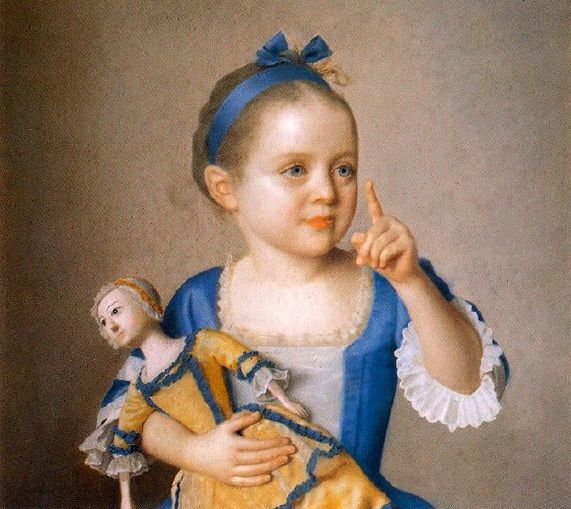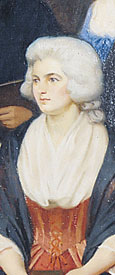 |
| Henry Raeburn, The Skating Minister, c 1790s |

Sunday, December 25, 2011
Merry Christmas
Saturday, December 24, 2011
Children's Dolls
In this season of shopping and gift wrapping and endless commercials my mind begins to wander to the days when children didn't have whole room dedicated to their toys. If a child was lucky enough to have a doll in the 18th century, only one would suffice. What's more amazing is when these old and beloved toys survive hundreds of years and multiple children's love.
For more images of dolls, the website 18th Century Notebook has amassed a fantastic online collection of these surviving toys.
 |
| Williamsburg |
 |
| V&A, 1740s |
 |
| Deerfield Memorial Hall, c 1770 |
 |
| Museum of London, 1766-70 |
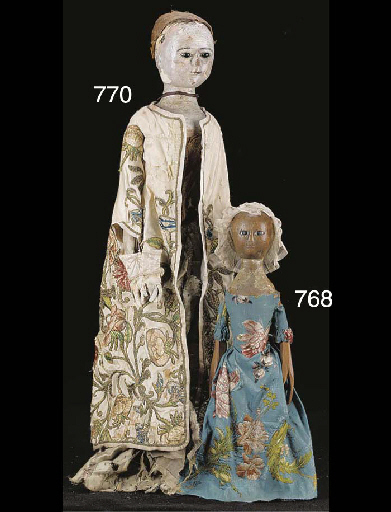 |
| Christie's |
 |
| Bowes Museum, c 1735 |
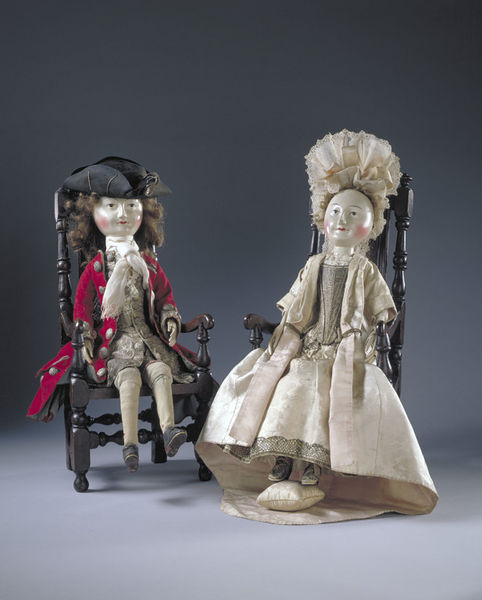 |
| V&A, c 1690-1710 |
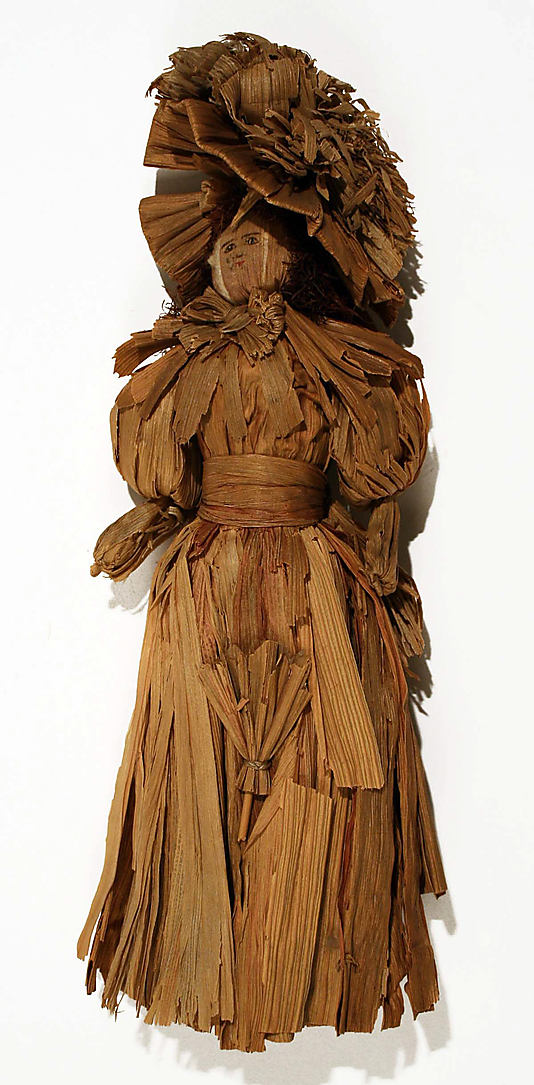 |
| The Met, Late 18th C |
For more images of dolls, the website 18th Century Notebook has amassed a fantastic online collection of these surviving toys.
Wednesday, December 21, 2011
TickTock
Nowadays we tend to have some sort of clock in every room of the house. If we don't have a clock usually we have a watch or, of course the ever-attached mobile phone. It's hard to imagine not having access to time. Most Georgians felt the same way too. In the previous century, a little over a quarter of households had a clock but by the 18th century that number skyrocketed to most everybody.
Well, perhaps "everybody" is not the best term to use. Strangely, clocks were one of those gadgets that men couldn't keep their hands off of and women couldn't really care less about. Somewhat ironic, considering the fancy rococo clocks we commonly see in museums! Strangely, most clocks were in the kitchen so as to prevent those cookies and tarts from being burnt. So despite the clock being seen as something incredibly masculine (even pocket watches were rarely used by women) women still managed to find more use for them than showing off their savvy knowledge of technology.
Well, perhaps "everybody" is not the best term to use. Strangely, clocks were one of those gadgets that men couldn't keep their hands off of and women couldn't really care less about. Somewhat ironic, considering the fancy rococo clocks we commonly see in museums! Strangely, most clocks were in the kitchen so as to prevent those cookies and tarts from being burnt. So despite the clock being seen as something incredibly masculine (even pocket watches were rarely used by women) women still managed to find more use for them than showing off their savvy knowledge of technology.
Friday, December 9, 2011
Book Review: Sense and Sensibility Bath Bicentenary Edition
It has been a year of Sense and Sensibility for me. Ever since I took part in Austenprose's Bicentenary Challenge at the beginning of the year I have been exposed to many different and colourful versions of this literary classic. I have been lucky enough to end this special year with a brand new edition of the book, the Bath Bicentenary Edition.
The story is the same classic we have grown to love. A tale of two sisters dealing with family hardships as well as the toils of love all at once. The introduction by Katharine Reeve is eye-opening in terms of just how eighteenth century the book actually is. While it may not have been published until 1811, the manuscript for Sense and Sensibility, or Elinor and Marianne, was written fifteen years before, around the year 1795. It contained an underlying commentary (or even criticism) on the eighteenth century fashion for sensibility which by the turn of the new century was slowly losing steam. Yet the book was originally written in the style associated with the sentimental novel, in epistolary form. Luckily, Jane scrapped that idea to trade it in for the lovely version we have today.
And what a lovely version we are blessed with 200 years later!
The Bicentary edition delivers all sorts of the gooey Austen prettiness that Janites crave. Now that I work in an office full of Janites I had to keep slapping their hands away from this book! Why? Well firstly, the book is a hardcover edition of Sense and Sensibility. Within the covers will you not only find Austen's classic tale but the beautiful colour illustrations of Niroot Puttapipat who depicts the characters in the popular fashions of 1795. Does Puttapipat draw a hot Colonel Brandon? You bet your sweet bonnet he does! What I especially like was that aside from the large colour plates that are dispersed throughout the book, there are also smaller silhouette illustrations, adding that lovely essence of the Regency period to a Regency book. For a preview of the illustrations I have been gushing about, check out this video.
The book is out now, just in time for holiday shopping. It would make a fabulous present for any Janite in your life, even if that Janite is you!
The story is the same classic we have grown to love. A tale of two sisters dealing with family hardships as well as the toils of love all at once. The introduction by Katharine Reeve is eye-opening in terms of just how eighteenth century the book actually is. While it may not have been published until 1811, the manuscript for Sense and Sensibility, or Elinor and Marianne, was written fifteen years before, around the year 1795. It contained an underlying commentary (or even criticism) on the eighteenth century fashion for sensibility which by the turn of the new century was slowly losing steam. Yet the book was originally written in the style associated with the sentimental novel, in epistolary form. Luckily, Jane scrapped that idea to trade it in for the lovely version we have today.
And what a lovely version we are blessed with 200 years later!
The Bicentary edition delivers all sorts of the gooey Austen prettiness that Janites crave. Now that I work in an office full of Janites I had to keep slapping their hands away from this book! Why? Well firstly, the book is a hardcover edition of Sense and Sensibility. Within the covers will you not only find Austen's classic tale but the beautiful colour illustrations of Niroot Puttapipat who depicts the characters in the popular fashions of 1795. Does Puttapipat draw a hot Colonel Brandon? You bet your sweet bonnet he does! What I especially like was that aside from the large colour plates that are dispersed throughout the book, there are also smaller silhouette illustrations, adding that lovely essence of the Regency period to a Regency book. For a preview of the illustrations I have been gushing about, check out this video.
The book is out now, just in time for holiday shopping. It would make a fabulous present for any Janite in your life, even if that Janite is you!
Monday, December 5, 2011
Monday, November 21, 2011
The Edgcumbes: Devoted Animal Lovers
Perhaps we are all guilty, at one time or another, for doting on our beloved pets. Some families even have a strong history of doting on their pets. The Cavendishes were quite well-known for their breeding of dog-lovers, one being the 5th Duke of Devonshire who much preferred his dogs' company to that of people!
Richard, the first Baron Edgcrumbe was one of the many 18th century men who included his dog in his formal portrait. That was pretty normal. However, when the dog died and Richard's world edgcrumbled before him, he did something a little abnormal. He had his dog's bones mounted and displayed. I'm sure Lady Edgcumbe loved that! Rumor has it that he would even talk to the bones and when they were finally moved into the family pet cemetery the dog's ghost would scratch on the door to be let in.
Sir Richard's daughter-in-law was another pet fanatic. But it wasn't a dog that she set her affections on, it was her pet pig, Cupid. Lady Edgcumbe and her pig could be seen strolling London, attending to daily business around the house, as well as taking meals together. Cupid was one of the family. Sadly, once again, an Edgcumbe was brought face to face with the death of a beloved animal. But was Emma going to mount poor Cupid's bones in the drawing room? Why of course not! Instead she is said to have buried Cupid below a memorial. Supposedly Cupid was even buried in a gold casket, but I'm not as keen to believe that. The king and queen were even said to have visited the memorial on a trip to the Edgcumbe estate.
Now we have no idea where this pig momento mori even is. But we do have something more lasting, the printed word. To comfort (or perhaps mock) the countess in her grief, a poet commemorated Cupid in verse;
For more on the search for Cupid's tomb, click here.
Richard, the first Baron Edgcrumbe was one of the many 18th century men who included his dog in his formal portrait. That was pretty normal. However, when the dog died and Richard's world edgcrumbled before him, he did something a little abnormal. He had his dog's bones mounted and displayed. I'm sure Lady Edgcumbe loved that! Rumor has it that he would even talk to the bones and when they were finally moved into the family pet cemetery the dog's ghost would scratch on the door to be let in.
Sir Richard's daughter-in-law was another pet fanatic. But it wasn't a dog that she set her affections on, it was her pet pig, Cupid. Lady Edgcumbe and her pig could be seen strolling London, attending to daily business around the house, as well as taking meals together. Cupid was one of the family. Sadly, once again, an Edgcumbe was brought face to face with the death of a beloved animal. But was Emma going to mount poor Cupid's bones in the drawing room? Why of course not! Instead she is said to have buried Cupid below a memorial. Supposedly Cupid was even buried in a gold casket, but I'm not as keen to believe that. The king and queen were even said to have visited the memorial on a trip to the Edgcumbe estate.
Now we have no idea where this pig momento mori even is. But we do have something more lasting, the printed word. To comfort (or perhaps mock) the countess in her grief, a poet commemorated Cupid in verse;
Oh dry those tears so round and big
Nor waste in sight your precious wind
Death only takes a little pig
Your Lord and Son are still behind.
For more on the search for Cupid's tomb, click here.
Thursday, November 17, 2011
Hannah More on Marie Antoinette's Charges
When news reached England of Marie Antoinette's trial, British citizens, despite their quarrels with the French, were absolutely disgusted. The opinionated Hannah More, like most women, was especially disgusted when charges were brought against the queen for incest,
"It is so diabolical, that if they had studied an invention on purpose to whitewash her from every charge, they could not have done it more effectively."
Wednesday, November 16, 2011
18 Folgate Street Daniel Severs House
18 Folgate street was brought to my attention by Melanie of Madame Guillotine who posted about the museum in July. Perhaps "museum" isn't the right word. "Art Instillation" would be much more appropriate.
Dennis Severs bought the dilapidated Georgian house in 1979 and proceeded to transform it into a time capsule by collecting antiques to tell a story in each room. But they aren't just placed neatly in a room like a historic home. Instead they are placed in a way which tells a story. Take for example the drawing room. Tea is set up in the center of the room, one of the cups is still half full with tea. Pearl earrings sit beside the cup as if a woman just took them off after a long night of socializing. Fans sit on chairs and some careless person actually dropped their teacup in the course of the night and the shattered remains are left on the floor. The effect really makes you feel as though you have traveled back in time.
There are a few ground rules you should be aware of before visiting. When you arrive to what looks like any old home you will see a note telling you to ring a bell. I still am not sure where the bell is but using the door knocker works just as well. You also have to arrive during the specified hours, so make sure you plan ahead! After knocking, someone will come out and explain what you're about to do and then tell you to fork over 10 pounds, so be sure to have cash on hand! Another thing you should know is that there is no talking allowed, not even whispering. My art historian friend and I got in trouble for this...but honestly two art historians in this house...there is no way we could just point and make faces to each other! Getting chastised by the workers is also a bit confusing because they don't have uniforms or name tags. So the girl in the hallway with a messenger bag telling you to shut up; yeah that's an employee.
There are notes and images around the house to give you a feel for what you're walking into. A reminder note for George IV's coronation is pinned to the door of a regency bedroom. So you must always be taking in your surroundings. I found a black cat on a chair and broke another rule by petting it. That was the first time an exhibition literally ran away from me!
Next time any of you lovers of the 18th and 19th centuries are in London, this house should definitely be on your to do list!
Dennis Severs bought the dilapidated Georgian house in 1979 and proceeded to transform it into a time capsule by collecting antiques to tell a story in each room. But they aren't just placed neatly in a room like a historic home. Instead they are placed in a way which tells a story. Take for example the drawing room. Tea is set up in the center of the room, one of the cups is still half full with tea. Pearl earrings sit beside the cup as if a woman just took them off after a long night of socializing. Fans sit on chairs and some careless person actually dropped their teacup in the course of the night and the shattered remains are left on the floor. The effect really makes you feel as though you have traveled back in time.
There are a few ground rules you should be aware of before visiting. When you arrive to what looks like any old home you will see a note telling you to ring a bell. I still am not sure where the bell is but using the door knocker works just as well. You also have to arrive during the specified hours, so make sure you plan ahead! After knocking, someone will come out and explain what you're about to do and then tell you to fork over 10 pounds, so be sure to have cash on hand! Another thing you should know is that there is no talking allowed, not even whispering. My art historian friend and I got in trouble for this...but honestly two art historians in this house...there is no way we could just point and make faces to each other! Getting chastised by the workers is also a bit confusing because they don't have uniforms or name tags. So the girl in the hallway with a messenger bag telling you to shut up; yeah that's an employee.
There are notes and images around the house to give you a feel for what you're walking into. A reminder note for George IV's coronation is pinned to the door of a regency bedroom. So you must always be taking in your surroundings. I found a black cat on a chair and broke another rule by petting it. That was the first time an exhibition literally ran away from me!
Next time any of you lovers of the 18th and 19th centuries are in London, this house should definitely be on your to do list!
Monday, November 14, 2011
The First Actresses at NPG London
Every once in a while you hear of an exhibition that is so incredibly geared toward your tastes that you question whether you curated it in your sleep. Sometimes you even happen to be in the right place at the right time in order to actually see these once-in-a-lifetime shows. I am counting my blessings that I manged to be around for The First Actresses at the National Portrait Gallery which opened last month.
The exhibition is small but packs a great punch. Upon entering you are greeted by Nell Gwyn's portraits by Verelst. The first is one of the more recognizable images of the King's mistress but the second, showing Nell in state of undress, has been loaned from a private collection and shows just how stunning the comedic actress was. Upon seeing this boudoir portrait you have already made your visit worthwhile. The rest of the exhibition featured so many portraits that I have included in blog posts I felt like I was actually walking into the Gossip Guide! The rooms were separated into categories having to do with themes such as Covent Garden and the actresses as a muse. Who was there? Well, anyone who is anybody, my pet! Hester Santlow tipping her harlequin cap welcomed guests into the menagerie of eighteenth-century actresses. Mary 'Perdita' Robinson, Fanny Abington, Dorothy Jordan, Kitty Clive, Elizabeth Linley Sheridan, Sarah Siddons, Lavinia Fenton, Giovanna Baccelli, and Hester Booth are just a sampling of the wide range of ladies seen through the paint and pencil of artists such as Reynolds, Gainsborough, Hogarth, Hoppner, Gardner, and Russell. Even the beautiful Duchess was there in Gardner's depiction of her, Lady Melbourne and Anne Damer as the three witches- it is the first time in ages that the work has been on public display and now it will hopefully stay that way as a new acquisition for the museum.
While limited, the collection the curators accrued is quiet profound in terms of selection. My only criticism is the lack of gossip in the exhibition. I would have liked to see more satirical images; sadly, only a couple of Gillrays were included in the exhibition. I believe having more satirical images would have captured the actresses' celebrity and the fanfare surrounding them.
The First Actresses will be at the National Portrait Gallery until 8 January so do not hesitate to see the exhibition. For those who cannot possibly manage to get to the show, the exhibition catalog is currently on sale for £19.50 and has fun essays on things like dancing and celebrity (hopefully I will have a review up in a timely manner).
The exhibition is small but packs a great punch. Upon entering you are greeted by Nell Gwyn's portraits by Verelst. The first is one of the more recognizable images of the King's mistress but the second, showing Nell in state of undress, has been loaned from a private collection and shows just how stunning the comedic actress was. Upon seeing this boudoir portrait you have already made your visit worthwhile. The rest of the exhibition featured so many portraits that I have included in blog posts I felt like I was actually walking into the Gossip Guide! The rooms were separated into categories having to do with themes such as Covent Garden and the actresses as a muse. Who was there? Well, anyone who is anybody, my pet! Hester Santlow tipping her harlequin cap welcomed guests into the menagerie of eighteenth-century actresses. Mary 'Perdita' Robinson, Fanny Abington, Dorothy Jordan, Kitty Clive, Elizabeth Linley Sheridan, Sarah Siddons, Lavinia Fenton, Giovanna Baccelli, and Hester Booth are just a sampling of the wide range of ladies seen through the paint and pencil of artists such as Reynolds, Gainsborough, Hogarth, Hoppner, Gardner, and Russell. Even the beautiful Duchess was there in Gardner's depiction of her, Lady Melbourne and Anne Damer as the three witches- it is the first time in ages that the work has been on public display and now it will hopefully stay that way as a new acquisition for the museum.
While limited, the collection the curators accrued is quiet profound in terms of selection. My only criticism is the lack of gossip in the exhibition. I would have liked to see more satirical images; sadly, only a couple of Gillrays were included in the exhibition. I believe having more satirical images would have captured the actresses' celebrity and the fanfare surrounding them.
The First Actresses will be at the National Portrait Gallery until 8 January so do not hesitate to see the exhibition. For those who cannot possibly manage to get to the show, the exhibition catalog is currently on sale for £19.50 and has fun essays on things like dancing and celebrity (hopefully I will have a review up in a timely manner).
Monday, October 31, 2011
The Witching Hour
For the last few months my personal research has consisted of witches, witches, and more witches. Now it is Halloween and what better way to celebrate than to display the 18th century's view of witches in art. Gone were the days of witch hunt hysteria and come were the days of the theatrical witch. Goya and Fuseli are perhaps the most famous for their witches but there were a handful more artists who experimented with the theme.
 |
| Francisco Goya, Witches in the Air, 1797-98 |
 |
| Francisco Goya, The Witches Sabbath, 1797-98 |
 |
| Henry Fuseli, The Witch and the Mandrake, 1812 |
 |
| Henry Fuseli, Macbeth Consulting the Vision of the Armed Head 1793-1794 |
 |
| John Runciman, The Three Witches, 1767-68 |
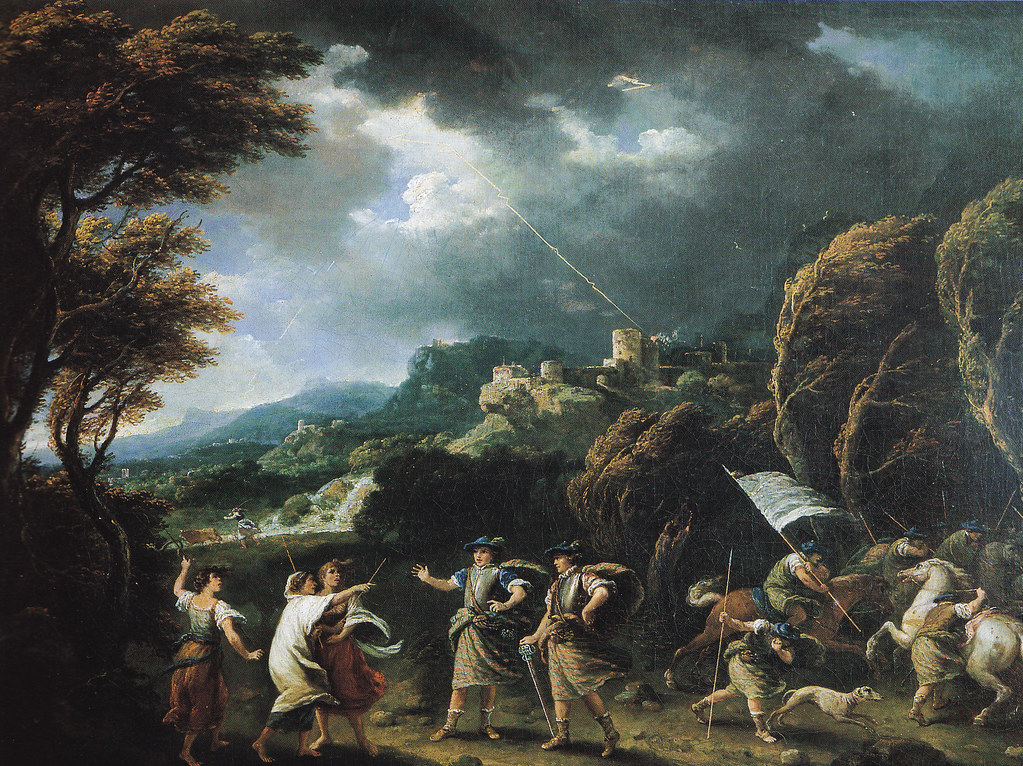 |
| Francesco Zuccarelli, Macbeth Banquo and the Witches, circa 1760s |
 |
| John Martin, Macbeth, 1820 |
 |
| James Gillray, A Phantasmagoria, 1803 |
 |
| Henry Fuseli, The Three Witches, 1783 |
 |
| Daniel Gardner, The Three Witches from Macbeth, 1775 |
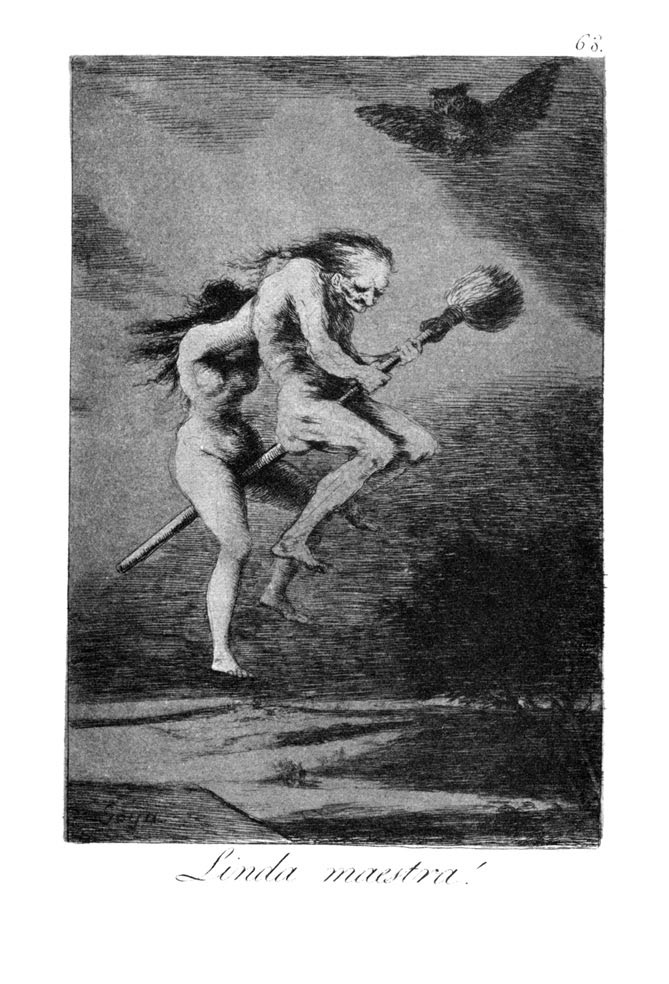 |
| Francisco Goya, Linda Maestra, 1798 |
 |
| Francisco Goya, The Witches Sabbath, 1823 |
Thursday, October 20, 2011
Show Stoppers
Sometimes a night at the opera theatre was not as relaxing as one would have hoped. Just ask Joseph Addison. He was trying to get some culture one night at a showing of Macbeth when the worst thing that could happen, happened. He discovered he had chosen a seat near an annoying audience member.
Some Years ago, I was at the Tragedy of Mackbeth, and unfortunately placed my self under a Woman of Quality that is since Dead; who, as I found by the Noise she made, was newly returned from France. A little before the rising of the Curtain, she broke out into a loud Soliloquy. When will the dear Witches enter? and immediately upon their first Appearance. asked a Lady that sate three Boxes from her, on her Right hand, if those Witches were not charming Creatures. A little after, as Betteron was in one of the finest Speeches of the Play, she shook her Fan at another Lady, who sate as far on her Left Hand, and told her with a Whisper, that might be heard all over the Pit, We must not expect to see a Balloon to night. Not long after, calling out to a young Baronet by his Name, who sate thtree Seats before me, she asked him whether Mackbeth's Wife was still alive; and before he could give an Answer, fell a talking of the Ghost of Banquo. She had by this time formed a little Audience to her self, and fixed the Attention of all about her. But as I had a mind to hear the Play, I got out of the Sphere of her Impertinence, and planted my self in one of the remotest Corners of the Pit."
Wednesday, October 19, 2011
New Exhibition: The First Actresses
Words cannot express how excited I am about an exhibition opening at London's National Portrait Gallery tomorrow. The First Actresses is a celebration of the fascinating women (many written about on this blog) who took London by storm, when they ascended to the stage, a short while after it was even allowed for women to do so. According to the NPG's website,
The First Actresses opens tomorrow but I personally will have to patiently bide my time to see the exhibition since I am planning on attending its corresponding conference on 11 November. Juicy details to follow! Who else is planning on going?
Amanda Vickery's Review
Laura Barnett's Review
"The First Actresses presents a vivid spectacle of femininity, fashion and theatricality in seventeenth and eighteenth-century Britain.The exhibition is not only monumental for the oeuvre but has acquired some amazing pieces that have been hidden away in private collections. An erotically-charged portrait of a topless Nell Gwyn, the self-proclaimed "Protestant Whore," has been restored to its original state of toplessness. Also on public display for the first time is the NPG's new acquisition, The Three Witches from Macbeth, which is quite special because now the museum finally has a adult depiction of Georgiana Duchess of Devonshire in its collection.
Taking centre stage are the intriguing and notorious female performers of the period whose lives outside of the theatre ranged from royal mistresses to admired writers and businesswomen. The exhibition reveals the many ways in which these early celebrities used portraiture to enhance their reputations, deflect scandal and create their professional identities."
The First Actresses opens tomorrow but I personally will have to patiently bide my time to see the exhibition since I am planning on attending its corresponding conference on 11 November. Juicy details to follow! Who else is planning on going?
Amanda Vickery's Review
Laura Barnett's Review
Monday, October 17, 2011
Thursday, October 13, 2011
Mrs James Fordyce, Really?
While sitting in a presentation by my most excellent colleague yesterday, I nearly fell over when he informed everyone that this beauty strewing flowers about the grave of Fingle was none other than the wife of our favorite opinionated fuddy-duddy, Dr James Fordyce.
What is even more gossip-worthy is the fact that Dr Fordyce wouldn't have approved of his wife's act of honoring the Celtic hero so it is quite interesting that she is depicted as such. Looks like it's another woman ignoring your well-meant advice, Dr Fordyce!
Tuesday, October 11, 2011
Cheese that Stimulates the Coversation
Thanks to an anonymous tip from a lovely reader I was introduced to this fantastic commercial. Did you go to your fridge looking for a bit of cheese? I know I did!
Monday, October 3, 2011
Daniel Gardner
I've become obsessed, as of late, with the lesser-known artist Daniel Gardner. Gardner is an interesting individual; anal-retentive by nature, his artwork, by contrast, is characterized by a freedom of brushstrokes and a dismissal of proportion rules. Gardner had some training with Joshua Reynolds and may have even worked on some of the leafy backgrounds of some of Reynolds' work. However his technique is all his own and a bit mysterious since he only allowed the sitter in the room with him while he painted and wouldn't allow them to see the work in progress. He also is said to have been pretty experimental with his painting, even going through the woods picking up odds and to make shades of paint. The results of his short-lived career (he retired comfortably during the peak of it) are stunningly beautiful. He can be characterized by his unique shades and creative group portraits.
 |
| Sir William Heathcote, Rev William Heathcote, and Major Gilbert out Hunting |
 |
| Mary Unthoff |
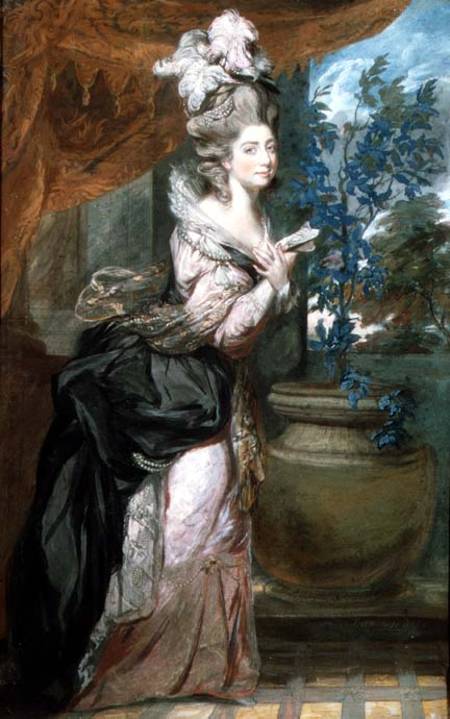 |
| Albinia Countess of Buckinghamshire |
 |
| The Taylor Family |
 |
| Mrs A Clarke |
 |
| Miss Elliott as Circe |
 |
| Lord Halifax and his Secretaries |
 |
| Emma Countess Tankerville with her Daughters |
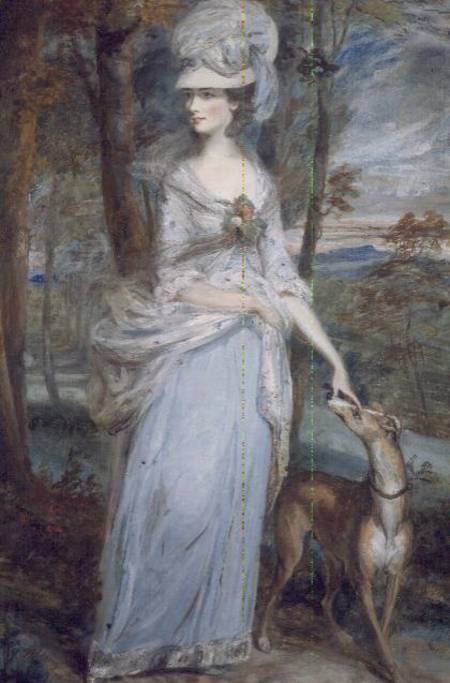 |
| Mrs. Paul Prickett |
 |
| Portrait of an Actress, 1775 |
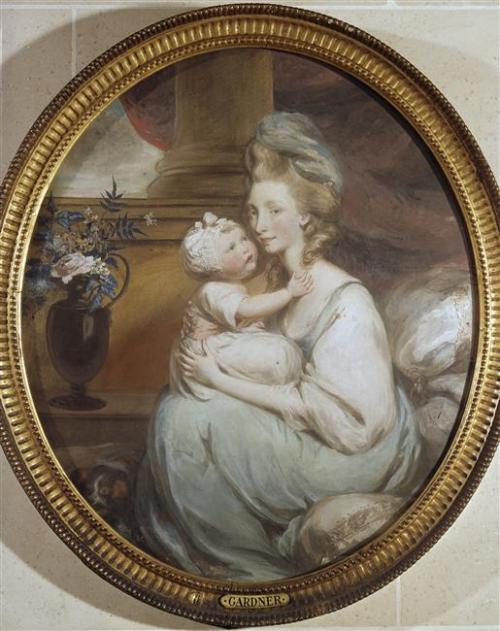 |
| Lady Auckland and her Daughter |
 |
| Elizabeth Elstone |
 |
| Elizabeth Farren later Countess of Derby |
 |
| Lady Rushout with her Three Elder Children, c 1773-5 |
 |
| Lady Melbourne the Duchess of Devonshire and Anne Damer as the Witches from Macbeth, 1775 |
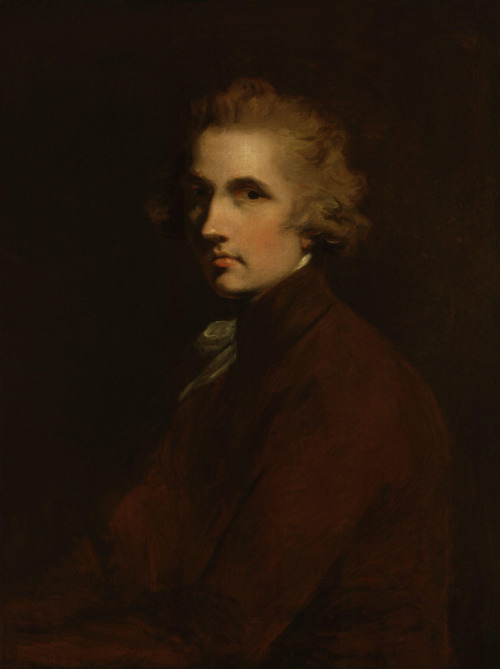 |
| Self-Portrait, c 1770 |
Subscribe to:
Comments (Atom)
